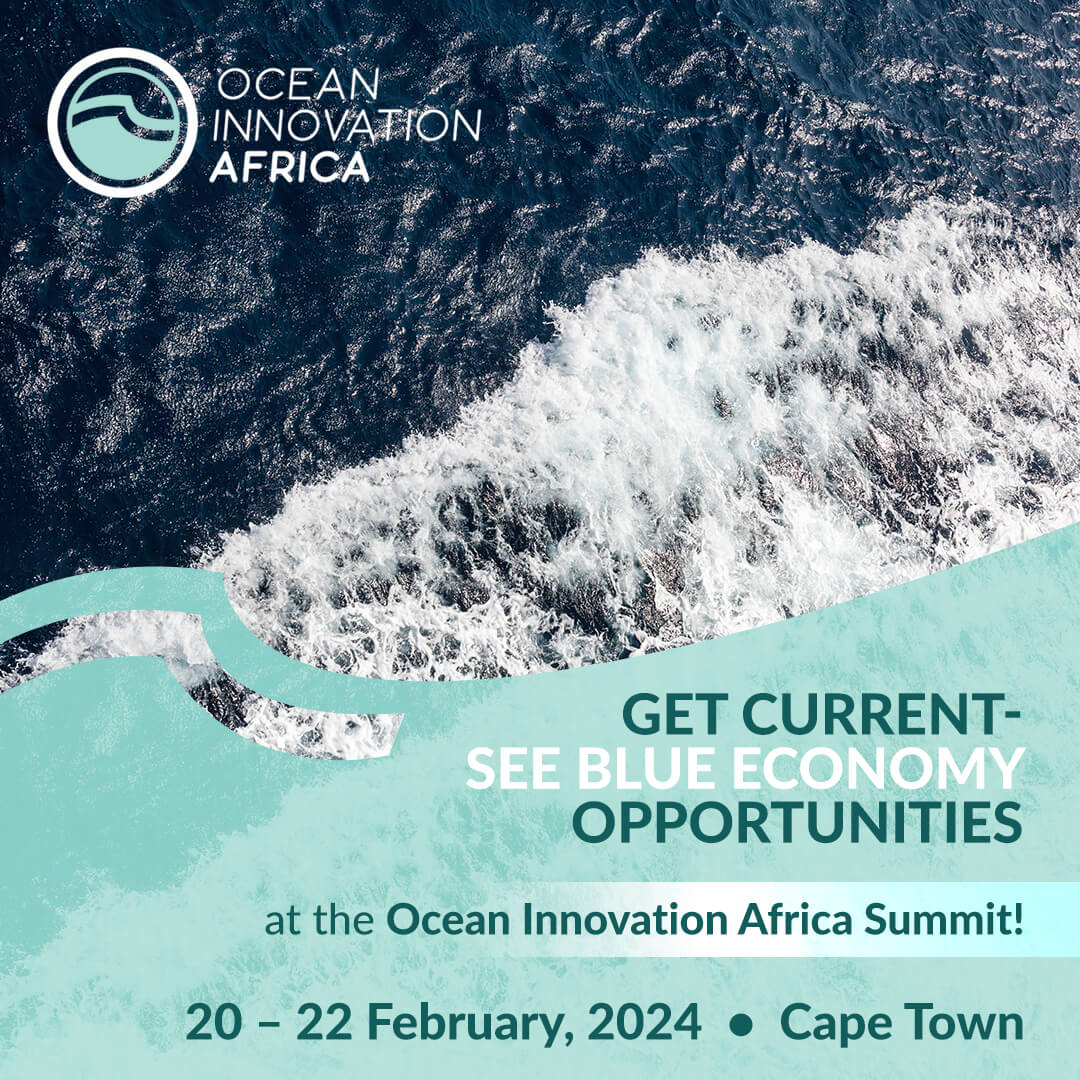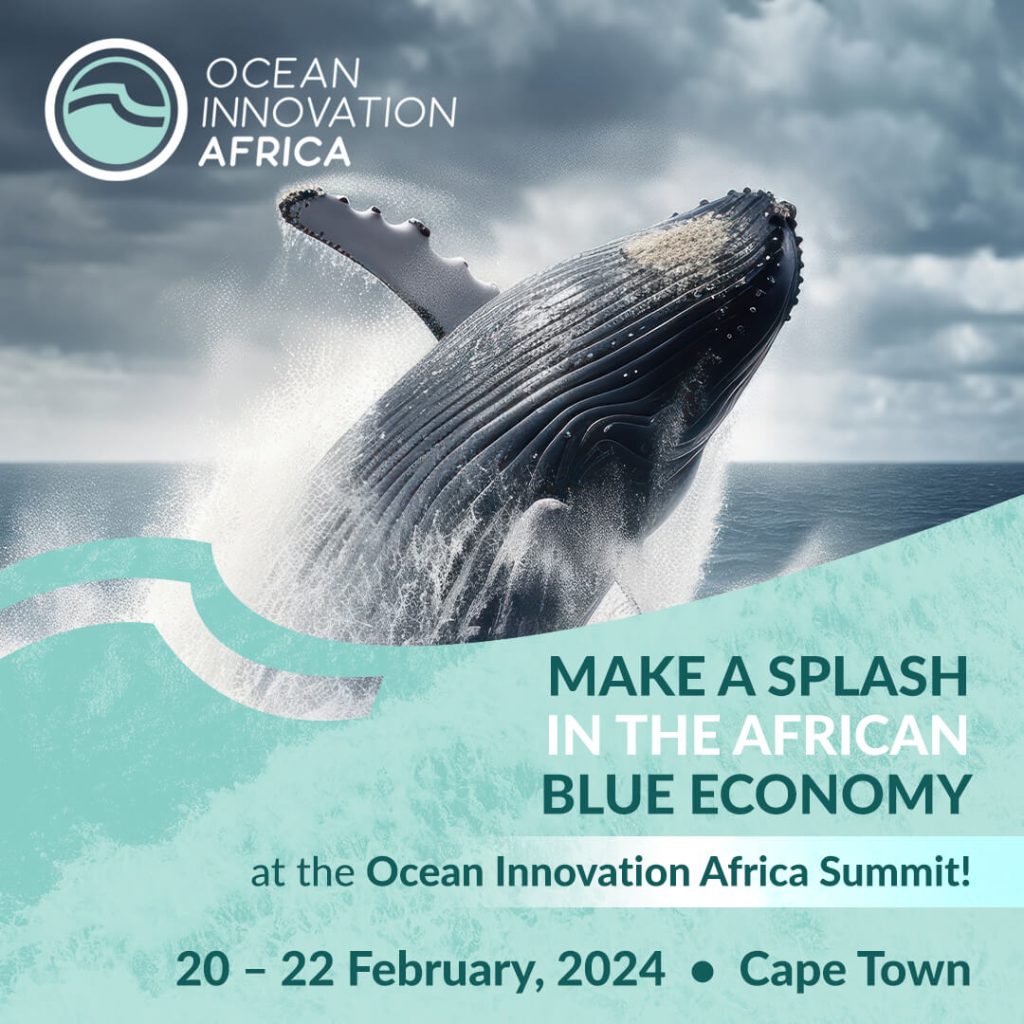Hundreds of stakeholders will gather in Cape Town next month for the Ocean Innovation Africa Summit and exhibition exploring ocean conservation and the opportunities for Africa in the emerging ‘blue economy’.
The world’s ocean and seas, critical in the broader climate change discussion, also offer a wealth of new, sustainable business opportunities.
Torsten Thiele, Founder of the Global Ocean Trust and speaker at the summit, believes Africa has an opportunity to leapfrog more developed regions in the blue economy space.
The blue economy, defined by the UN as a range of sustainable and socially equitable economic activities related to the oceans, seas and coastal areas, offers immense opportunities to investors, entrepreneurs and communities.
Key opportunities for Africa
“In Africa, the opportunity is vast,” Thiele says. “Because there is less traditional infrastructure in place, there is room to build a new blue economy, faster. Per dollar invested, the returns to be achieved in a blue economy are larger in Africa than they are in more developed countries.”
Thiele says: “Seaweed alone is a great sector, for example. You can eat it, use it to replace plastic, for biofuel, fertiliser, cosmetics and more.” The World Bank estimates that ten emerging global seaweed markets have a potential growth of up to $11.8 billion by 2030.
Another expert speaker at the summit, Nassim Oulmane, Acting Director Technology, Climate Change and Natural Resource Management Division at the UN Economic Commission for Africa, believes one of the most promising opportunities in Africa’s blue economy lies in blue carbon development and the trade of related credits, particularly in mangrove, seagrass, and tidal marsh ecosystems. He notes: “These ecosystems have a remarkable capacity to sequester carbon and greenhouse gases, surpassing even tropical forests in efficiency. The related carbon credits are in high demand across global markets, offering a significant incentive for increased investment in ecosystem conservation.”
Oulmane says a notable success story is the ‘Mikoko Pamoja’ project in Kenya, which exemplifies the potential of blue carbon initiatives. “These ventures not only combat climate change but also foster the sustainable livelihoods of local communities, including youth and women employment and educational opportunities. Additionally, they contribute to the development of water treatment facilities, aligning with Africa’s commitments to the Paris Agreement, the Convention on Biological Diversity (CBD), Sustainable Development Goals (SDGs), Agenda 2063, and more,” he says.
“Furthermore, innovative approaches that enhance the protection and conservation of seagrass and mangroves hold substantial promise. For instance, by increasing seagrass protection, it is estimated that the world could save approximately 650 million tons of CO2 annually (World Bank). Similarly, bolstering mangrove conservation efforts could prevent flooding for 6 million people and help countries avoid losses of productive assets valued at approximately US$24 billion (World Bank).”
However, the degradation of the oceans is such that we need to accelerate our efforts and move to a much larger scale. That’s why the Great Blue Wall initiative, led by IUCN and UNECA in partnership with other actors such as OceanHub Africa, is a real innovation.
This initiative, championed by several coastal African countries, focuses on cooperation in the fields of the blue economy, ocean regeneration, maritime safety and the sustainable management of marine resources in general. It aims to establish a first-of-its-kind connected network of seascapes to benefit people and nature. The initiative presents innovative approaches to safeguarding the oceans while promoting economic development AND providing a blue response to climate change and its negative consequences.
Investment to grow natural capital
Thiele says guided investment is needed to grow natural capital. “Instead of building the economy with a capital-intensive approach, a science-based approach should be taken to build innovative African startups, which requires less capital and delivers greater returns over the longer term.”
He notes: “The traditional venture finance model is one of ‘the winner takes it all’ so investors tend to run with ones which have really large returns. However, project finance is more appropriate for the blue space, to help build sustainable, solid blue businesses. It is a longer-term approach, the way we used to build businesses.”
Thiele says financing flows for blue economy projects remain a hurdle. “Large investors don’t always see the pathways to get the money to the investments. We need to construct the pathways.” He notes that the Ocean Risk Alliance (ORRAA) drives investment into coastal and ocean natural capital through finance and insurance products that reduce risk. “The Alliance helps to develop guarantee facilities and build the support mechanisms. It’s a very dynamic conversation and it may sound complex to investors. It’s a constant handholding argument. However, we have been encouraged to see that large financial institutions are showing interest – particularly through their sustainability divisions.”
Thiele believes forums such as the Ocean Innovation Africa Summit offer an important opportunity for multiple sectors across blue economy value chains to share ideas.
Challenges and threats
“A challenge for ocean focused networks is they don’t have connectivity into other sectors. We need collaboration across value chains, including stakeholders in terrestrial climate, business, technology and finance. All sectors need to consider the world’s largest under-tapped resource. Even landlocked states are relevant players in the ocean context, because their goods will be shipped by sea,” Thiele says.
Oulmane highlights several challenges and threats that must be addressed: “First, there is a considerable capacity gap in unlocking the potential of blue carbon initiatives. Building the knowledge and skills necessary for effective conservation and credit trading is essential.”
“Secondly, a substantial public/private investment gap exists in the blue economy sector. The ocean, often viewed as a public good with inherent risks, requires a shift in perception. Advocacy, awareness-raising campaigns, and training on the opportunities available in the blue economy are needed to attract private sector investment,” he says.
“A stark disparity in investment is evident when comparing terrestrial protected areas to marine natural capital investments. Investment in terrestrial protected areas amounted to about US$23 billion, while marine natural capital investments were only US$980 million (UNEP). To address these challenges, increased support from the Green Climate Fund for Small Island Developing States (SIDS) in the Eastern and Southern Africa region is crucial. Such support can help bridge the investment gap and unlock the immense potential of Africa’s blue economy.”
Innovation in funding and policy
Oulmane highlights some noteworthy innovations in terms of financial tools: “Seychelles, Gabon, and Cabo Verde have pioneered debt-for-nature swaps that allocate funds to blue economy and ocean conservation. These innovative financial mechanisms address both debt relief and environmental sustainability.”
In addition, Seychelles made history by issuing the world’s first Sovereign Blue Bond. This innovative financial instrument raises capital for sustainable fisheries and marine conservation projects while aligning with the country’s debt management.
He notes: “The Cabo Verde Stock Exchange’s Blu-X initiative serves as a regional platform for listing and trading sustainable and inclusive blue financial instruments. Through four bond issuances, it has attracted domestic, regional, and global investments in Cabo Verde’s blue economy: At the policy level, innovations such as the Blue Economy Valuation Toolkit and the development of Blue Economy Satellite Accounts help quantify the economic value of marine resources and ecosystems. These tools inform sustainable policy-making and investment decisions.
These examples showcase the innovative spirit within Africa’s blue economy sector, where nations are actively exploring novel financial instruments, collaborative approaches, and data-driven tools to ensure that ocean conservation and economic development go hand in hand, contributing to a sustainable and resilient future.”

Addressing fragmented governance
Loreley Picourt, Executive Director of the Ocean & Climate Platform, will also be among the international experts travelling to South Africa for the event.
She says: “One challenge is reconciling blue economy opportunities with sustainable practices. We need to be realistic, respectful and mindful of how we manage the ocean while also taking into account cultural, indigenous and local knowledge and practices. We have an opportunity to reinvent how we govern, to be inclusive, and mindful of how we share the benefits.”
“We have an opportunity to acknowledge that the ocean connects us all, instead of dividing us. It is not just ecosystems – it’s the blue lung of the planet. In terms of geopolitics, it also brings us together,” she says.
She points to the new BBNJ/’High Seas Treaty’ signed by representatives from over 80 countries, which aims to cover critical gaps in ocean governance and protect the biodiversity of the High Seas and deep sea, as a sign of progress. “This is a groundbreaking treaty – it will address issues of access and equity. It will define who has access to the wildest place on earth and how the benefits, new knowledge and resources are equitably shared,” she says.
Picourt notes that governance is a complex field: “We know it is critical to protect and restore nature, but we also need to develop sustainable green and grey infrastructure adapted to withstand extreme weather events. Thus, we need to better understand how the threat of sea level rise will be integrated into different strategies. The world is at risk of sea level rise, erosion, floods, drought and other coastal hazards. We must work on long-term strategies to anticipate the impacts, rather than just responding to them.”
Picourt adds: “I’m coming to South Africa to be inspired by stakeholders – seeing young and innovative minds coming together to find opportunities in existing challenges.”
The Ocean Innovation Africa Summit 2024 will bring together stakeholders across the blue economy value chain for three days of talks, networking and innovation showcases. Taking place from 20 – 22 February at the Avenue Conference and Events Centre at Cape Town’s V&A Waterfront, the summit will convene innovators, entrepreneurs, researchers, investors, industry-leaders, and policy-makers from Africa and abroad. The topics under discussion will include small scale fisheries, aquaculture, ecosystem restoration and management, plastics innovation, investment, carbon and biodiversity metrics and blue economy opportunities. A startup pitch competition will showcase innovation in the blue economy space, and participants will have an opportunity to visit key blue economy sites and facilities in Cape Town and learn about the latest innovations and technologies in the field. Premium pass holders can also enjoy highlights such as a sunset cruise and winelands bus tour.
For more information and to reserve a seat at the Ocean Innovation Africa Summit 2024, visit https://ocean-innovation.africa/

